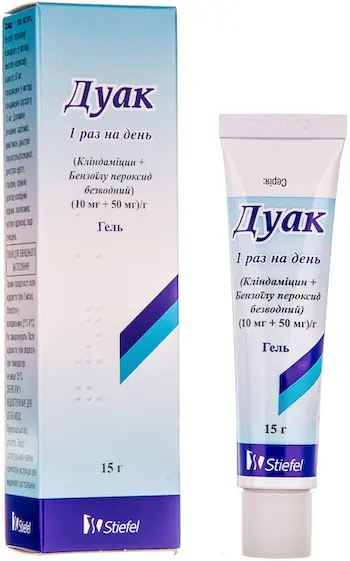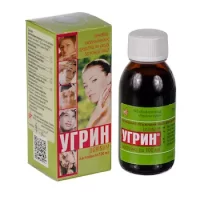$36.00
Manufacturer: Netherlands
Purpose: Kills acne-causing bacteria, reduces inflammation, treats pimples, and blackheads.
Description
Duak (benzoyl anhydrous peroxide) gel 15 g
Ingredients
Duak gel contains benzoyl anhydrous peroxide as the active ingredient.
Dosage
Apply a thin layer of Duak gel to the affected area once daily, preferably in the evening, or as directed by your healthcare provider.
Indications
Duak gel is indicated for the topical treatment of acne vulgaris.
Contraindications
Do not use Duak gel if you are allergic to benzoyl peroxide or any other ingredients in the gel.
Directions
Before applying Duak gel, wash the affected area with a mild cleanser and pat dry. Apply a small amount of the gel and rub it in gently. Avoid contact with eyes, mouth, and mucous membranes.
Scientific Evidence
Benzoyl peroxide, the active ingredient in Duak gel, has been extensively studied for its efficacy in treating acne. Research has shown that benzoyl peroxide works by reducing the amount of acne-causing bacteria on the skin and by helping to unclog pores, leading to a reduction in acne lesions.
Additional Information
It is important to use Duak gel regularly as directed to see the best results. Some individuals may experience mild skin irritation or dryness when using benzoyl peroxide products, but this usually subsides with continued use. If irritation persists, discontinue use and consult a healthcare provider.
Benzoyl peroxide, the active ingredient in Duak gel, exhibits antibacterial properties and helps to reduce inflammation associated with acne. It is also known to have a mild keratolytic effect, which aids in the removal of dead skin cells, preventing pore blockages.
Clinical trials have demonstrated the effectiveness of benzoyl peroxide in improving acne symptoms, with many patients experiencing a significant reduction in acne severity and frequency of breakouts. The fast-acting nature of benzoyl peroxide makes it a popular choice for treating mild to moderate acne.







Recent Reviews